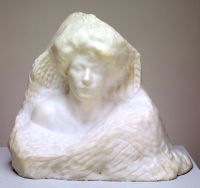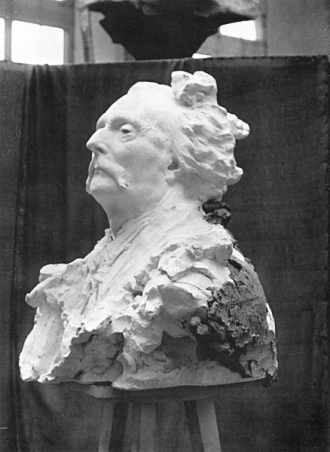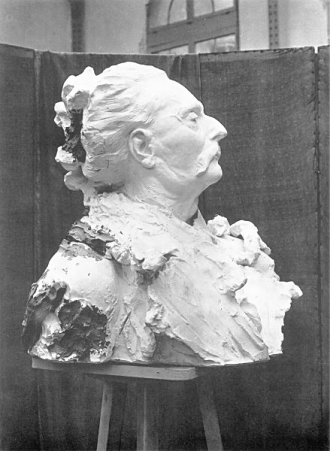H. de Roos - Rodin´s Approach to Art |
|
15. Realm of the non-finito But also smaller works often wait years for completion. Rodin produces version after version, corrects, selects one piece as the starting point for further modifications. In 1919, Etiènne Clémentel recalls how Rodin had made a portrait bust of him, three years earlier: He
indicated to me at the beginning of our sessions how he
wanted to work. He said to me: "I will make four
successive busts. The first I am going to bring out in
relief the slight impressions in clay." It´s true.
In four or five settings he took measurements, without any
sort of preliminary studies, constantly delineating as he
progressed. (...) He said to me: "When I have this
... I would make a mould of the first bust. I´ll make a
cast in caly from this mould, and then your suffering will
begin. (...) The fourth state was never finished, so that the plaster busts kept at the Musée Rodin only represent the various study versions. |
|
|
To finish the clay model for the bust of bust of Eve Fairfax for which she sat at the beginning of 1903, Rodin needed nearly a year. In the summer of 1904, when the portrait was still with the stone carver to be executed in marble, Eve Fairfax dissolved her engagement with Ernest Becket, who then cancelled the commission. Rodin decided to present her the marble bust all the same. After having started a small bust of Helene von Nostitz on 18 November 1902, he continues to work on it in her absence and writes to Helene on 23 October 1903: For my part, I have worked much on your small bust and still have been unsatisfied all the time. This small bust is nothing but a dream and does not have enough reality, some traits have slipped into it that do not resemble you. [1] |
Miss Eve Fairfax (La Nature) |
.. the work on my poor bust ( that I have continued far away from the model as sterile labour, picked up so many times in my small room in Meudon), too much longed for to be good. Bad sign. [2] Finally in 1907, when the Nostitz family decides to have a larger portrait made of their daughter in marble, Rodin has a chance to have Helene sit for him once more. It takes 31 sessions before Rodin let her leave Paris again. Still, he does not discard the smaller model he began with five years earlier. On 29 march 1908, when the marble version already is presented in an London exhibition, Rodin assures Helene: Your small bust, that was conceived of in Italy, is my first thought of you, she stands in front of me in the small room from where I write you. [3] To deliver a single portrait of Clemenceau, Rodin produces thirty-four different busts. Steinberg concludes: “To finish sooner would choke off a line of life.” Maillol however, who much admired the Nostitz bust, believes Rodin with every version strives to improve its quality, because posterity will judge him by his works: Only by his labour he comes to such a result. He could very well produce a bust like that of Mrs Nostitz or Mrs Noailles in two sessions: he is skillful enough for that. But he wants to do it right; because it that it is through his busts that he will live on, he senses that. [4]
Whatever Rodin´s precise motivation may have been: over the decades, he creates a vast realm of the non-finito, scribbling notes on photographs for later corrections, taking casts from clay models to document them before modifying them once more.
"Barbey d'Aurevilly", plaster
re-edited by Rodin with clay, 1909, photo by World's
Graphic Press Unlike, for example, van Gogh, who was occasionally forced to paint over old
canvases*, *An example: The Parsonage Garden in the
Snow, Nuenen, January, 1885, now in the Norton Simon Museum of Art, Pasadena, California. X-rays have shown Van Gogh originally painted a weaver and then, decided to turn the canvas 90 degrees and paint over it. Source: David Brooks, at
http://www.vangoghgallery.com/misc/holiday7.htm. **One of the most bitter experiences in his life, he told Bartlett, was that on his return to Paris in 1875, he found his atelier at the Rue Hermel vacated; his plaster studies had been demolished and cleared away by his landlord Robinet.
|
|
|
|
|
|
Notice:
Museum logos appear only as buttons linking to Museum Websites and do not
imply any |
|


